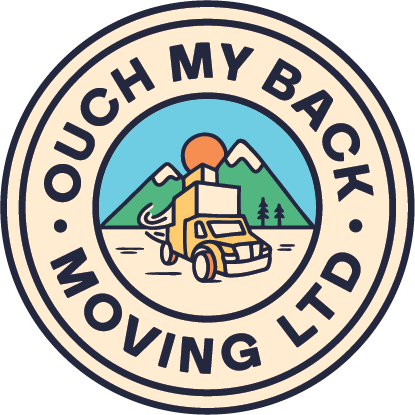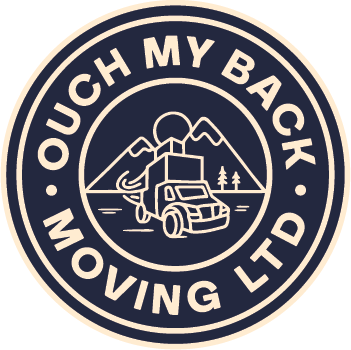No matter what room you are packing, it will be complicated and time-consuming, but the kitchen is one of the more complex home areas to pack. On the surface, packing a kitchen for moving may seem as simple as packing any other room, setting aside a date one or two months in advance, and placing items in a box. While packing kitchen items in boxes a few months in advance is ideal, the complexity comes in when deciding what items you need to pack now or later because just like you should not pack your bedroom mattress two months before a move, you should not dissemble your oven if you primarily use it to cook meals two months in advance.
A kitchen also contains various items, including silverware, glassware, food, etc., each requiring different packing methods. So, a kitchen is unlike any other room in the house and requires a strategic approach to ensure every item gets packed correctly while ensuring the kitchen is usable until the last day.
Below, we will look at tips for packing a kitchen for moving and how to pack individual categories of items you may find in your kitchen.
Tips for packing a kitchen

Below, we will look at a few tips for packing a kitchen
Pick the right packing essentials.
As mentioned before, a kitchen is an assortment of different items. This assortment means you will need different packing materials for these various items. Some of the items you will need for a move include the following.
- Small, medium, Large boxes
- Plastic wrap
- Packing tape
- Dividers
- Plastic bags
Having these items at the beginning of the process will set you up for success.
Do not buy any new food or kitchen items.
When moving to a new location, people often want to buy new items for the new place. This desire is understandable, but you should hold off on new purchases until you settle in your new home. The more new items you buy in your home, the more packing items are required.
This restraint applies to food as well. The goal is to eat through or discard as much food as possible before the move.
Decide which items to pack immediately and which to pack later.
While it is possible to fully pack a bedroom early in the process and sleep somewhere else in the house, a kitchen is the one area of the home that most likely will be needed until the morning of the move. So, you cannot pack all items at once unless you primarily eat takeout or find it acceptable and affordable to switch to strictly takeout every day before the move. But if this transition is insufficient, then before packing a kitchen, you must decide what items must get packed immediately and what items you will need longer.
If you know you will not need the microwave between the moment you choose to move and the day of the move, you can pack it. But you should hold off on packing utensils you know you will require daily.
It’s all about understanding what you will be eating, what cooking items you need, and how long you need them. Once you know this, packing a kitchen slowly and steadily becomes easy.
How do you pack kitchen items?
Each kitchen item requires different packing requirements. Packing utensils will not be the same as packing an air fryer. They will require different levels of care, different boxes, and possibly the implementation of specialized packing items. Below, we will look at some everyday items found in a kitchen and explore how each should get packed.
Utensils
If the utensils are in a special tray or container, you can take these items with the utensils inside them, wrap them with plastic wrap, and place them inside the packing box. If the utensils are loose, you can wrap them individually with plastic wrap in groups of three to four and put them inside a small box.
Pots and pans
You should pack Pots and pans according to size. Start with large pots and pans at the bottom and place smaller ones inside the larger ones.
If the pots and pans have lids, wrap them separately in plastic and place them inside the same box. If there is not enough room, they can go in a separate box.
Glassware
These fragile items will require a separator. Place the separator inside the box and place each piece of glassware into its slots. For an additional layer of protection, you can add packing paper inside each piece of glassware or individually wrap them with plastic or bubble wrap.
Plates
The method for packing plates depends on their fragility. If they are not particularly fragile, you can stack them on top of each other. However, if they are delicate, while you can still stack them on top of each other, additional precautions are needed, such as wrapping each plate in plastic.
Food items
You can place items like BBQ sauce or cinnamon bottles in small boxes without additional precautions. However, if the bottles are glass, wrap them in plastic and put them in a box.
Place refrigerated food items inside a small cooler.
However, if you are traveling a long distance and believe the refrigerated food items will spoil, they should be tossed or donated.
Appliances
Kitchen appliances should get placed in boxes that correspond to their size. Use bubble wrap or packing paper to fill gaps to help avoid damage during transit.
For more oversized items like refrigerators or freezers, you will need professional help to remove any tubes or doors. Make sure to inform the moving company you have these items so they can take care of them either the day of the move or a few days prior.
Once the kitchen items have been packed, seal each box and label them accordingly to make unpacking easier.
Conclusion
Packing is never easy, but packing a kitchen for moving is incredibly complex with all the different items in a kitchen. However, like any room in a house, it must be packed, so it is necessary to understand what items to pack at the beginning and what items to pack later. Understanding this and additional tips like buying the right packing materials and avoiding buying any new kitchen items will make packing a kitchen much more straightforward. For such moving services you should only opt for Ouch My Back Moving company.


